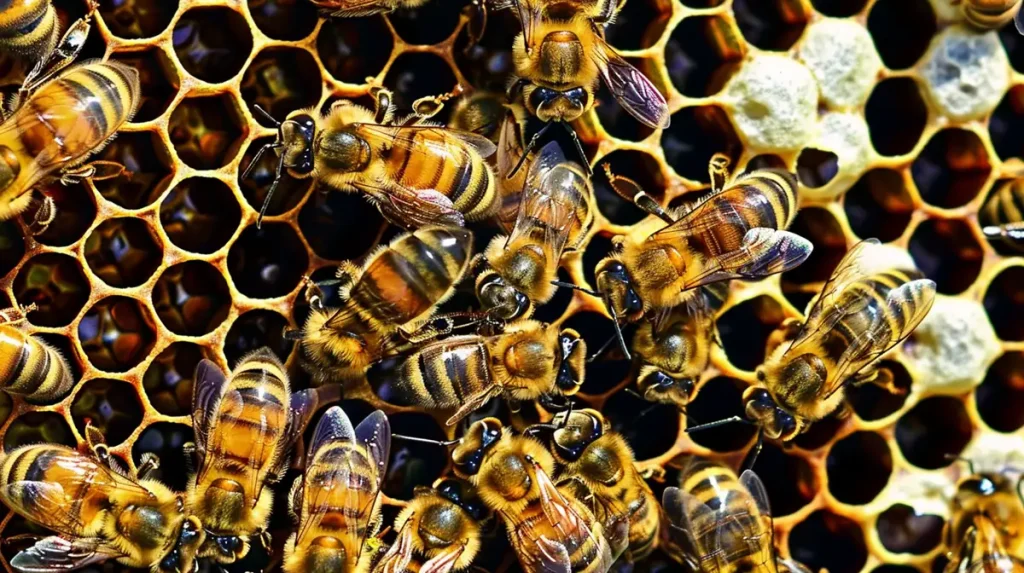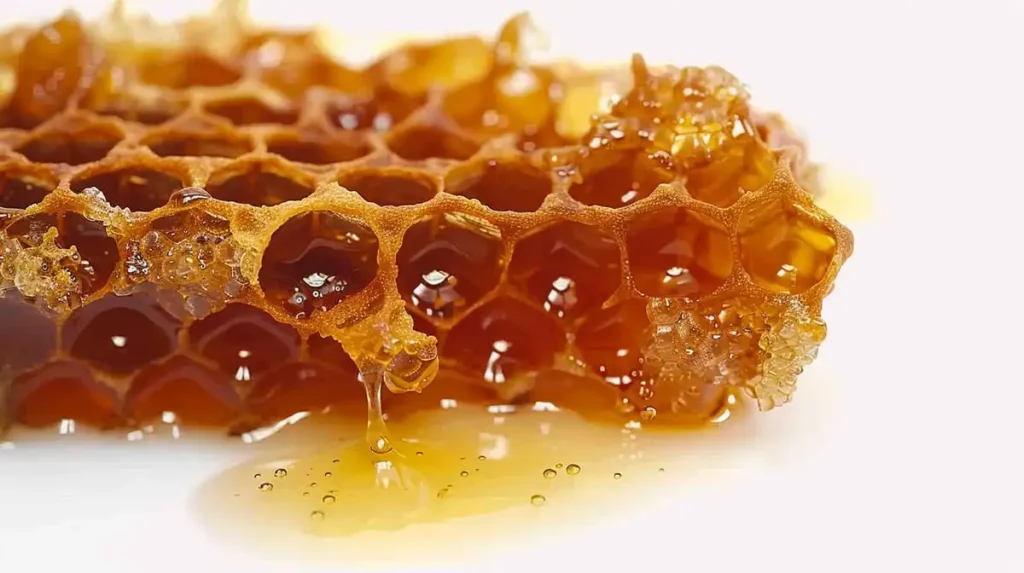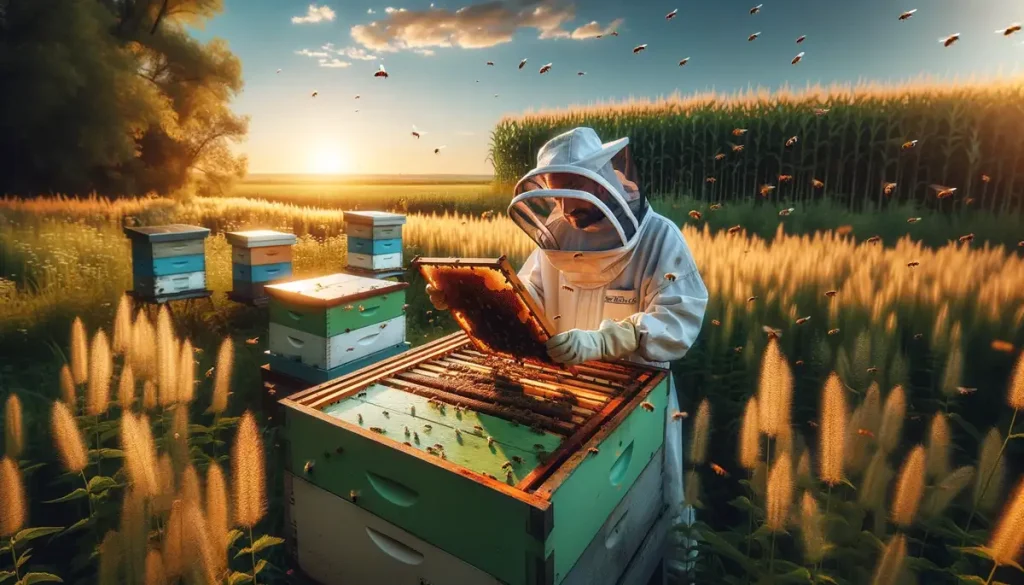Table of Contents
One of the most important aspects of beekeeping is knowing how many times a year do you harvest honey from your hives. While there is no one-size-fits-all answer to the question of how many times you can harvest honey from a hive, there are several factors that can affect the frequency and amount of honey that can be collected. In this article, I will discuss these factors in depth and offer some tips for maximizing your honey harvest. Whether you’re a seasoned beekeeper or just starting out, understanding the ins and outs of honey harvesting is essential for success in this most rewarding of hobbies.
Harvesting Honey
Harvesting honey is a crucial aspect of beekeeping that requires careful planning and consideration. How often you can harvest honey though depends on several factors, such as the size of the hive, weather conditions, the climate, and the surrounding plant life. The optimal time for harvesting honey is typically between June and September, but this may vary depending on the aforementioned factors.
Factors Affecting Honey Yield
The size of the hive plays a significant role in determining the amount of honey that can be harvested. However, other factors also come into play such as weather conditions and the surrounding plant life. Bees rely on nectar from flowers to produce honey, and the amount of nectar available will depend on the plant species in the vicinity. Therefore, beekeepers should consider the types of plants that are available during the nectar flow when determining the optimal time to harvest honey.
Weather conditions can also impact the amount of honey that can be harvested. For instance, cold and wet weather can reduce the amount of nectar available, leading to a lower yield. Similarly, dry weather can cause the nectar to dry up, also leading to a reduced yield. To that end, it is essential to monitor weather conditions and adjust harvesting schedules accordingly.
Harvesting Schedule
When determining the optimal time to harvest honey, beekeepers should consider the growth cycle of their bees. New colonies may not produce much honey during their first year since they are focused on building comb and storing honey to feed the colony. Harvesting honey during the first year may leave the bees with insufficient amounts to sustain themselves, especially during the winter months. It is advisable to wait until the colony has had sufficient time to grow in population and strength before harvesting honey.
During the nectar flow, beekeepers can add supers to the hive and remove them as soon as they are filled with honey, replacing them with another one. A queen excluder should be added to supers intended for honey storage to prevent the queen from laying eggs in the frames. Removing the supers as soon as they are full will encourage the bees to continue producing honey and prevent overcrowding in the hive.

Harvesting Honey – Conclusion
Honey harvesting is an essential aspect of beekeeping that requires careful planning and consideration. The optimal time to harvest honey will depend on various factors, such as the size of the hive, weather conditions, and the surrounding plant life. It is essential to monitor these factors regularly and adjust the harvesting schedule accordingly to ensure a healthy and productive hive. Doing so means beekeepers can enjoy a bountiful harvest while ensuring the bees have enough honey to sustain themselves during the winter months.
How Do I Know When Honey Can be Harvested from My Hive?
As a beekeeper, harvesting honey from the hive is always an exciting and rewarding experience. Nevertheless, it’s important to wait until the honey is ready to be harvested to ensure its quality and longevity. Here then are some factors to consider when determining whether your honey is ready for harvest:
Capped Honey
The first indicator that honey is ready to be harvested is when it is capped. When bees collect nectar, they bring it back to the hive and store it in honeycomb cells. The bees then fan their wings to evaporate the excess moisture, creating thick honey. Once the honey has reached the ideal moisture content, the bees cap the cells with beeswax to protect the honey from moisture and contaminants.
Moisture Content
The ideal moisture content for honey is around 18%, which is what bees aim for when they create capped honey. If the moisture content is too high, the honey can ferment or spoil. To check the moisture content of your honey you can use a refractometer, which measures the refractive index of the honey to determine its moisture content. Refractometers are available online and can be a helpful tool for beekeepers.
Testing for Curing
Another way to determine if the honey is ready for harvest is to test it for curing. Curing refers to the process of the bees evaporating moisture from the nectar to create honey. To test for curing, remove a frame from the hive and hold it horizontally. Gently shake the frame to see if any honey drips out of the cells. If the honey stays in the cells, it is likely cured and ready for harvest. If the honey drips out, it may need more time to cure.
Patience is Key
While it can be tempting to harvest honey as soon as possible, it’s important to be patient and wait until the honey is fully cured and capped. Harvesting honey too early can result in raw honey that spoils quickly or honey that is too high in moisture and prone to fermentation. By waiting until the honey is ready, you can ensure a higher quality and longer-lasting product.
- Carter, Anthony (Author)
- English (Publication Language)
- 194 Pages - 02/28/2024 (Publication Date) - Independently published (Publisher)

How Many Times a Year Do You Harvest Honey – Conclusion
To sum up, harvesting honey from a hive is a delicate balance between the needs of the bees and the desires of the beekeeper. While it can be tempting to harvest as much honey as possible, it’s important to keep in mind that the bees rely on their honey stores to survive through the winter months. Therefore, it’s crucial to monitor the hive’s honey reserves and only take what the bees can spare.
How often do you harvest honey from a hive? Well, it varies depending on several factors such as the strength of the colony, the availability of nectar sources, and the climate in your region. Some beekeepers harvest honey once a year, while others may harvest multiple times in a season. However, it’s essential to maintain the health of the colony and avoid overharvesting, as this can cause stress and weaken the bees.
Additionally, it’s important to follow best practices for harvesting honey, such as wearing protective gear, using smoke to calm the bees, and using the appropriate equipment. This not only ensures a safe and successful harvest but also reduces the risk of harming the bees or damaging the hive.
Overall, successful beekeeping involves striking a balance between the needs of the bees and the goals of the beekeeper. By monitoring the hive, harvesting honey responsibly, and maintaining a healthy colony, you can enjoy the sweet rewards of beekeeping while also supporting the essential work of these amazing creatures. With care and attention, you can create a sustainable and thriving beekeeping operation for years to come.
Looking to up your beekeeping game? Check out our latest product recommendations so you can take things to the next level!
Introducing The Top 12 Best Beekeeping Veils For 2024
Introducing The Top 20 Best Beekeeping Gloves For 2024
Introducing The Absolute Best Beekeeping Suits For 2024
The 15 Top Beekeeping Books for 2024
The Top 11 Honey Extractors for 2024
The Top 12 Mason Bee Houses for 2024
Beekeeping Disclaimer:
Beekeeping, like any agricultural activity, involves inherent risks. It is important to understand these risks and take appropriate measures to mitigate them.
Potential risks associated with beekeeping include:
- Bee stings: Honey bees are generally not aggressive but can become defensive if they feel threatened or their hive is disturbed. Bee stings can cause allergic reactions or even anaphylaxis in some individuals, which can be life-threatening. It is important to wear protective clothing and follow best practices when handling bees to minimize the risk of stings.
- Diseases and pests: Bees can be vulnerable to various diseases and pests, including mites, viruses, and bacterial infections. These can have significant impacts on bee colonies, leading to reduced honey production or even colony collapse. It is important to monitor hives regularly and take appropriate measures to prevent and treat diseases and pests.
- Weather conditions: Extreme weather conditions, such as drought or cold temperatures, can affect the health and productivity of bee colonies. It is important to ensure that hives are appropriately sheltered and provided with adequate food and water.
- Environmental hazards: Bees can be affected by environmental hazards such as pesticide exposure, pollution, and habitat loss. It is important to be aware of these hazards and take appropriate measures to protect bee colonies and promote healthy environments for bees.
- Legal requirements: Beekeeping may be subject to local, state, or national regulations, such as registration or inspection requirements. It is important to be aware of these requirements and comply with them.
While beekeeping can be a rewarding and enjoyable activity, it is important to be aware of the potential risks and take appropriate measures to mitigate them. By following best practices and staying informed about the latest developments in beekeeping, beekeepers can help ensure the health and productivity of their hives and contribute to the well-being of bee populations worldwide.
Last update on 2024-04-23 / Affiliate links / Images from Amazon Product Advertising API



